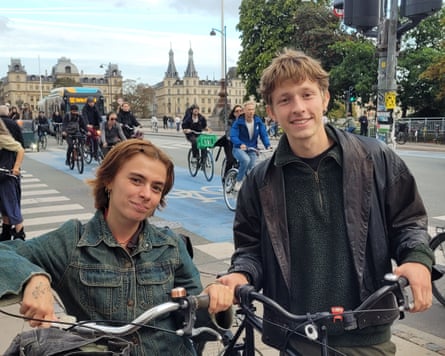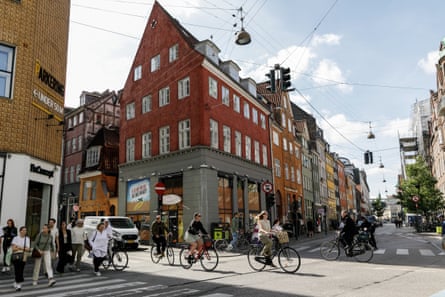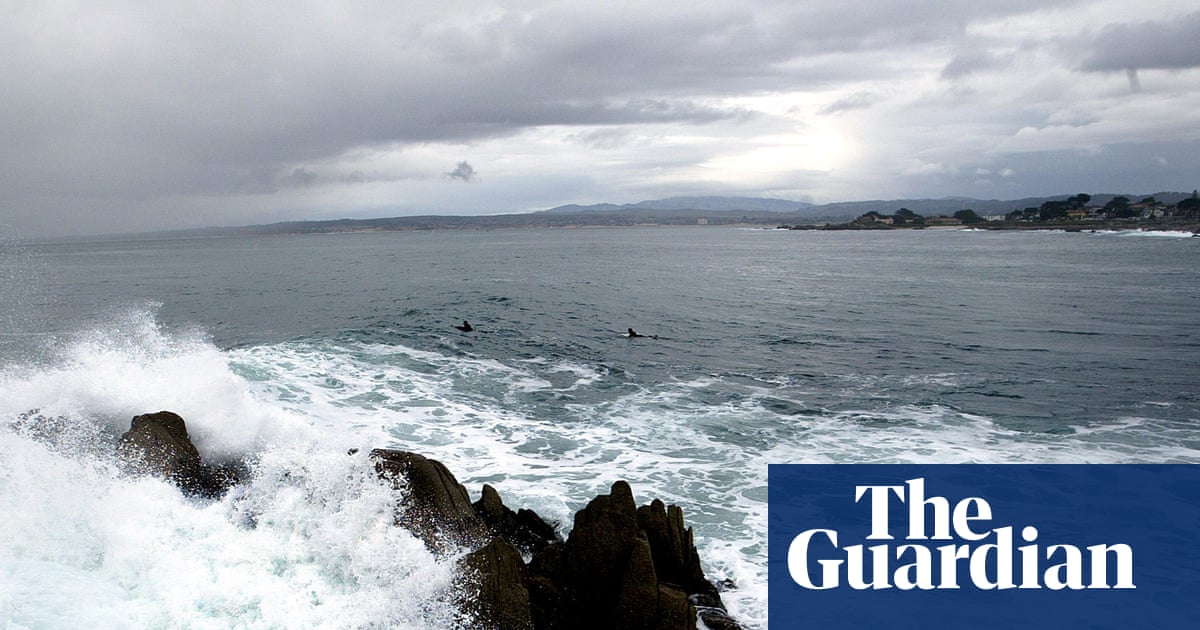“Hitting a green wave? It’s the best feeling, especially when you’re in a hurry,” says actor Samuel Traum, unlocking his bike by a Copenhagen intersection thronged by two-wheeled commuters. “The opposite, a red wave, is the worst.”
For those of us who do not live in cycle-friendly Copenhagen, the green wave that Traum describes is a system started by the city authorities 16 years ago: in order to encourage bike travel, they synchronised traffic lights on several key roads so that a rush-hour cyclist travelling at about 20km/h (12.4mph) could catch green lights all the way.
Green waves are now set to spread to 15 more routes after the municipality approved new cycling provisions in the budget this month.
“The idea is nice because usually the lights are set at the speed of the cars,” says Lars, a 33-year-old analyst cycling down Nørrebrogade, where the first pilot project began. “I wish it would be expanded.”

Like many cities in Europe, Copenhagen became a city of cars after the second world war. In the 1970s, however, it began to fight back against the traffic with huge bike protests that pushed the municipality to build a vast network of cycle lanes. If every city had as many, a study found in June, the total carbon dioxide emissions from private vehicles would fall by 6%.
But officials admit that even Copenhagen is struggling to cut car use among those who travel into the city from outside. The construction of cycle superhighways has helped commuters reach the outskirts by bike, but red lights slow them down when they reach the streets. It is here that transport planners hope green waves will help.
“It’s so important to have the freedom on a bike to just ride along at a good speed,” says Line Barfod, the mayor for technology and environment, who zips down Nørrebrogade every day on her way to city hall and argues that more green waves will encourage people to ditch their cars. “You can feel the city wants you – and supports you – going on a bike.”
The expansion of the traffic light tweak has faced little political pushback and residents who have experienced green waves speak glowingly of them. Barfod says: “The war between cars and bikes is more on parking spaces than changing speeds.”
But at peak hours, local people say, Copenhagen’s cycling culture has become a victim of its own success. The lanes are too busy to enjoy an unbroken green wave, says Pia, a 65-year-old fundraiser who comes into the city by train and cycles home. “Sometimes it’s so crowded you won’t make it to the next light in time.”
Lars, who usually cycles too fast to ride the wave himself, thinks the city is reaching a difficult trade-off point. “We’re at a point now where we need to choose between cars and cycles. If you give cycles more space, it will compromise with the ability of drivers to access different spaces.”
Copenhagen is up against Amsterdam for the title of Europe’s cycling capital, but other big cities such as Paris and London are starting to catch up. The municipality scored poorly in a recent ranking of child-friendly cycling on the share of roads with 30km/h speed limits, though it has begun to add more.
after newsletter promotion

Its newly approved 602m Danish kroner (£70.5m) cycling package, which will improve the green waves and increase the flow of cyclists at rush hour, will also seek to build the country’s longest cycling bridge and improve lighting on bike lanes. The city has installed 19 “bicycle barometers” to understand how fast cyclists move, and – once it has a better idea of the city’s pulse – plans to time green waves to start when large numbers of bikes arrive at the start of a corridor.
Such systems can improve bike traffic flow, says Gernot Sieg, a transport scientist at the University of Münster in Germany, but are not yet widespread, partly because cyclists often travel at different speeds. In some Dutch cities, such as Enschede, traffic lights have more sophisticated systems that detect incoming cyclists and prioritise them when turning green.
Best of all are cycling highways that do not interact with cars at all, says Sieg. “It’s a better idea to make bike lanes where you don’t have to cross streets.”
Getting people out of cars and moving their bodies is an effective way to save lives and protect the planet. About 20,000 people are killed on EU roads each year, and gains from better safety standards are being threatened by a boom in big cars that pack more punch when they hit a human body.
In cities, the toxic particles that vehicles spew when burning petrol and crunching tyres on tarmac have fuelled further frustration with car-centric planning.
For Leena Ylä-Mononen, who moved to Copenhagen from Helsinki two years ago to lead the European Environment Agency, the city is an example of what others can achieve – even if it might seem scary. It took her five months before she dared to get on her bike and cycle down lanes packed with so many people moving so fast.
“To get into the flow took me some time – but it really is the most comfortable way to move around,” says Ylä-Mononen. “Of course, it’s also because it’s a flat city with not many hills. But we have wind, so you still have to pedal hard.”

 3 months ago
45
3 months ago
45

















































